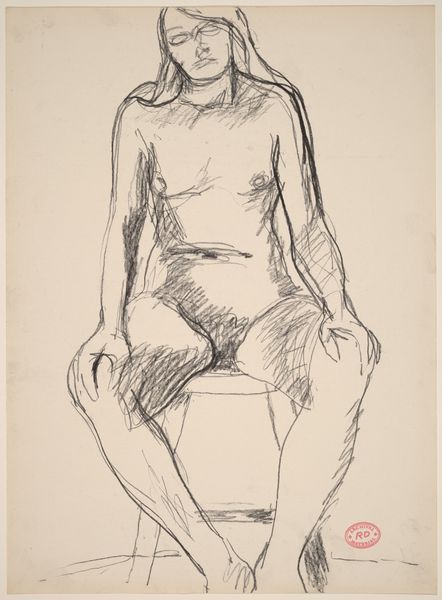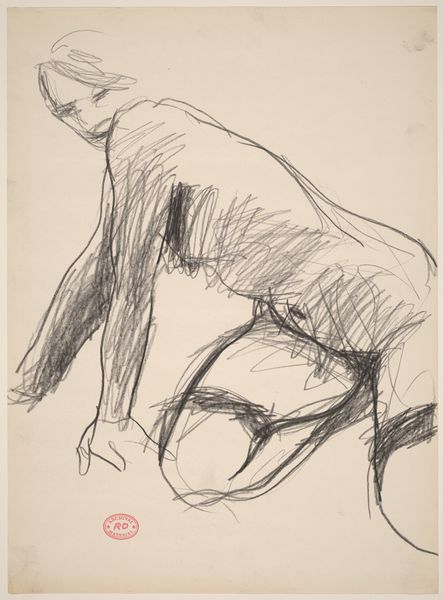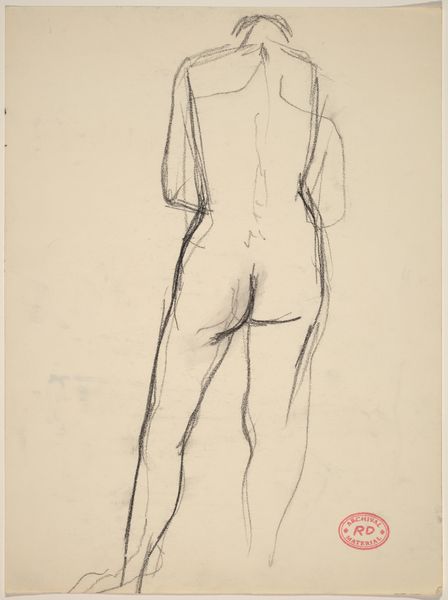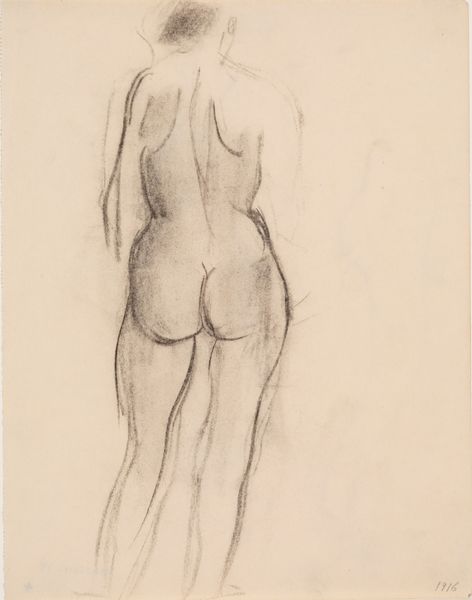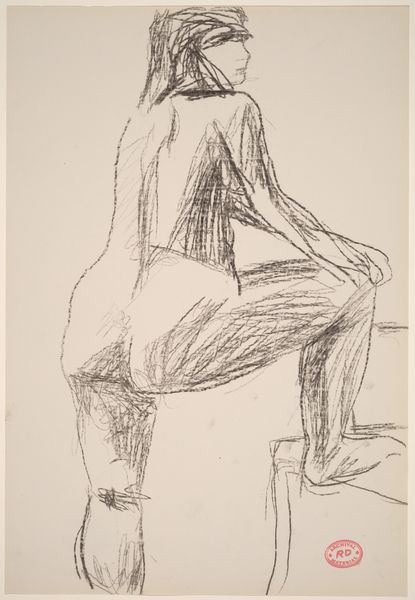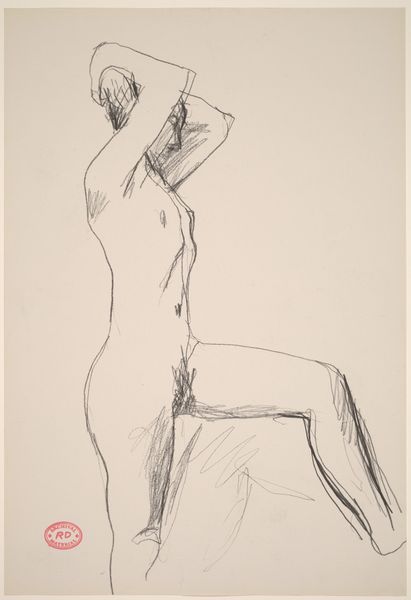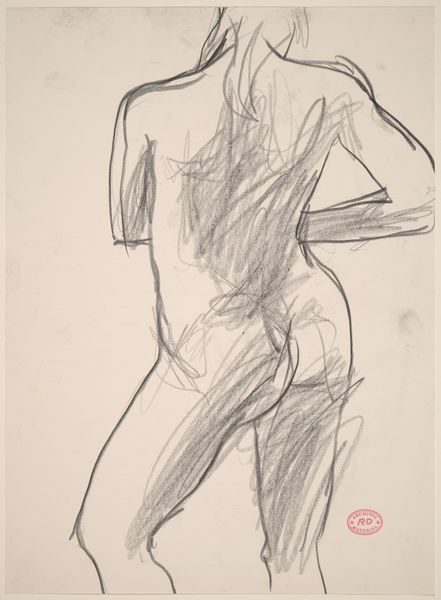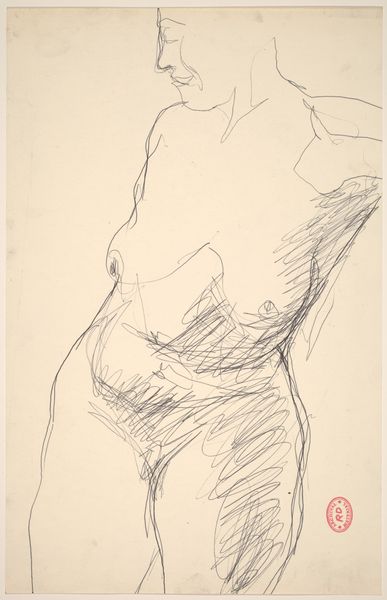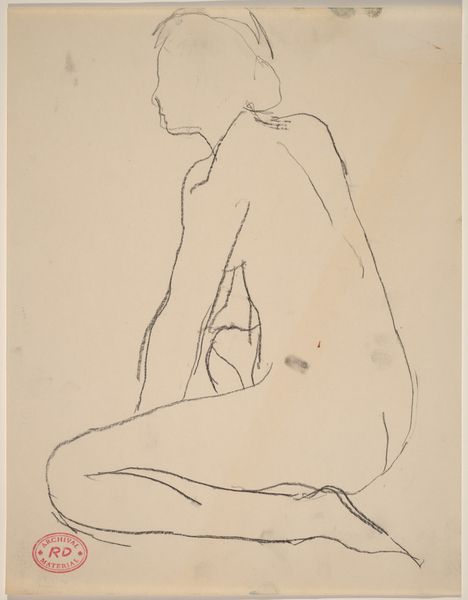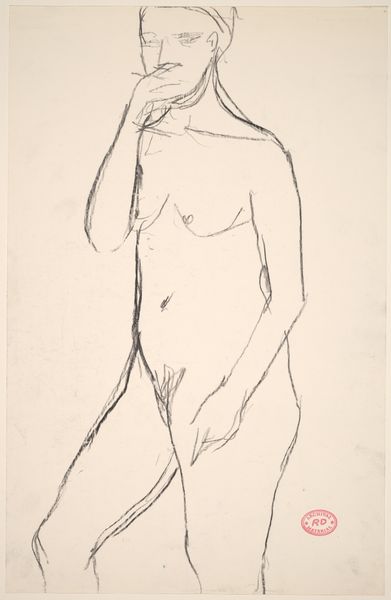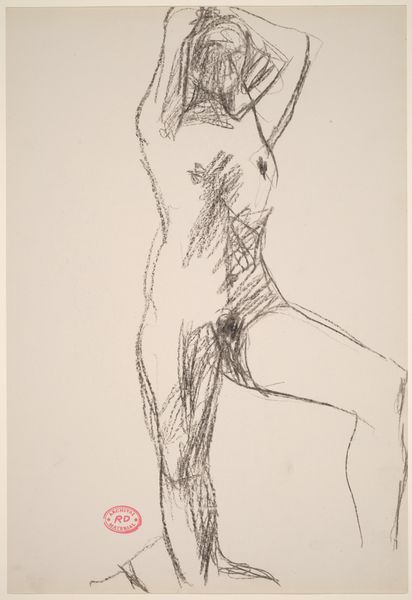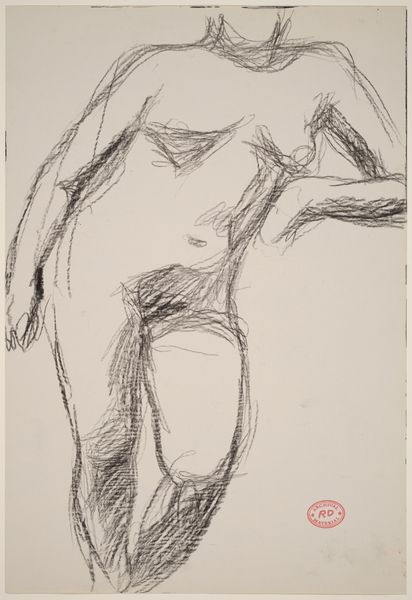![Untitled [back view of a nude with her right foot on a pedestal] by Richard Diebenkorn](/_next/image?url=https%3A%2F%2Fd2w8kbdekdi1gv.cloudfront.net%2FeyJidWNrZXQiOiAiYXJ0ZXJhLWltYWdlcy1idWNrZXQiLCAia2V5IjogImFydHdvcmtzLzNhOTI3YjkxLWQ4ZGQtNDNiMi1iNjU0LTE2YjJmOGVkN2UwOC8zYTkyN2I5MS1kOGRkLTQzYjItYjY1NC0xNmIyZjhlZDdlMDhfZnVsbC5qcGciLCAiZWRpdHMiOiB7InJlc2l6ZSI6IHsid2lkdGgiOiAxOTIwLCAiaGVpZ2h0IjogMTkyMCwgImZpdCI6ICJpbnNpZGUifX19&w=3840&q=75)
Untitled [back view of a nude with her right foot on a pedestal] 1955 - 1967
0:00
0:00
drawing, pencil
#
portrait
#
drawing
#
figuration
#
bay-area-figurative-movement
#
pencil
#
nude
Dimensions: overall: 30.5 x 22.5 cm (12 x 8 7/8 in.)
Copyright: National Gallery of Art: CC0 1.0
Editor: So, this is an untitled pencil drawing by Richard Diebenkorn, created sometime between 1955 and 1967. It's a back view of a nude figure, with one foot resting on what looks like a pedestal. There's something very immediate about the mark-making, almost like a sketch done quickly. What do you see when you look at this drawing? Curator: I see a powerful tension between the subject and the process of its creation. This isn’t just a study of the human form; it’s a record of Diebenkorn’s engagement with his materials, his labor, and a social history steeped in objectification. Consider the implications of "nude" as a subject. Who is afforded the opportunity to create nudes and who is being drawn? How does this impact the work we are viewing? Editor: That's an interesting way to frame it. So, instead of just seeing a nude, you are looking at who has the power dynamic in creating this piece. Could you elaborate on what you mean by his engagement with his labor? Curator: Absolutely. Look closely at the density of the pencil marks, particularly the rapid, almost frantic hatching that defines the figure's back and legs. This reveals the physical act of drawing, the pressure and speed of his hand moving across the paper. That repetitive mark-making—it’s labor. What is he communicating through that labor, consciously or not? This wasn't effortless rendering, this was labor. Editor: So, you're suggesting the drawing is not just about representing a body, but about Diebenkorn's physical and social position relative to that body, communicated through his materials. Does the pedestal the figure's foot rests on play into this as well? Curator: Precisely! It raises her up, presenting the female form as something of significance. The question becomes whether Diebenkorn, through his choices with his pencil and paper, is continuing to objectify women by situating them in such a manner or is using this setting to point to issues of classical Western artistic practice. How do we determine the artist's perspective? Editor: This has completely shifted how I viewed the piece! I'm now thinking less about the figure itself and more about the conditions of its representation. Thank you! Curator: And I appreciate you prompting us to remember the inherent act of production that often becomes invisible.
Comments
No comments
Be the first to comment and join the conversation on the ultimate creative platform.
